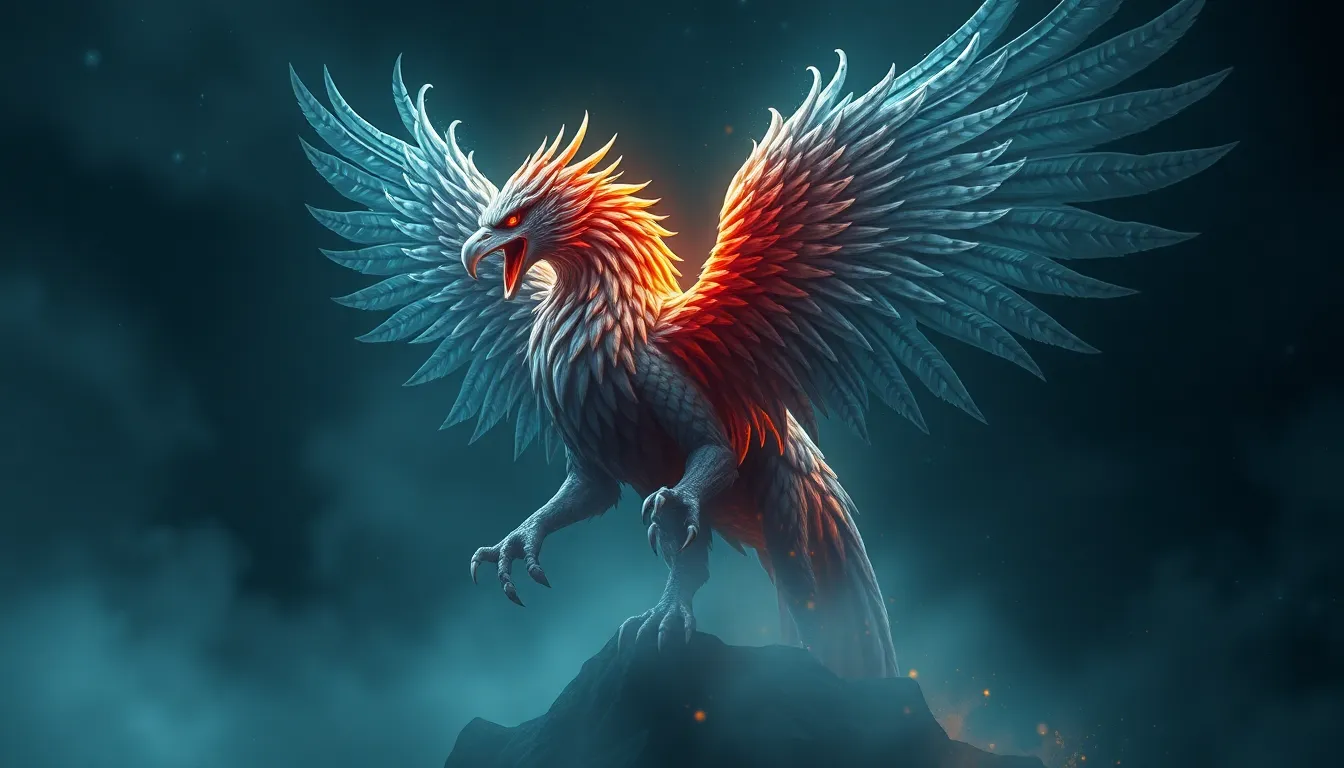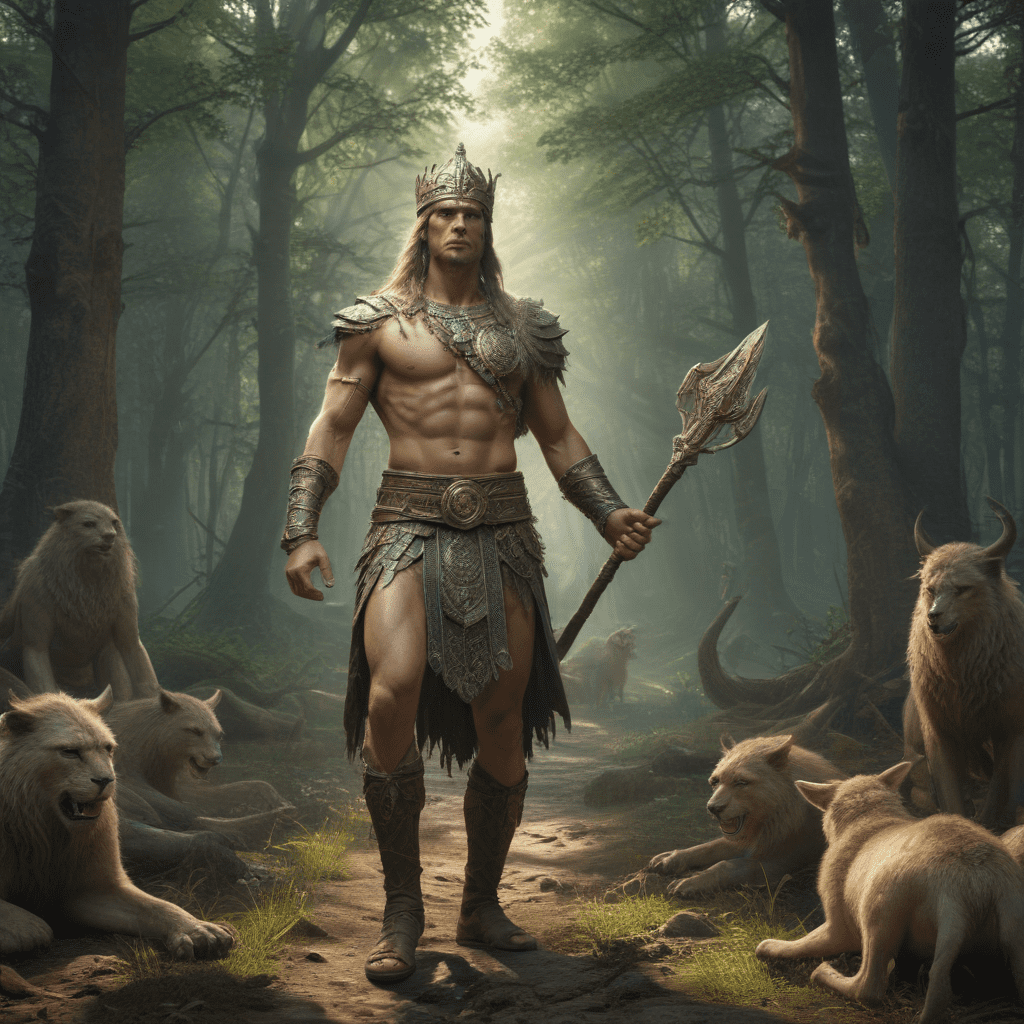The Enigmatic Griffin: A Symbol of Strength and Valor
I. Introduction
The griffin is a legendary creature that has captured the imagination of various cultures throughout history. With the body of a lion and the head and wings of an eagle, the griffin epitomizes a unique blend of strength and majesty. This mythical beast has not only been an object of fascination but also a symbol of power and valor across different civilizations.
Historically, the griffin has held significant cultural relevance, often associated with the divine and the heroic. Its depiction can be traced back to ancient civilizations, where it served various roles, from guardian of treasures to a symbol of divine protection. The purpose of this article is to explore the mythological origins, physical characteristics, artistic representations, and the cultural impact of the griffin, as well as its enduring legacy in modern society.
II. Mythological Origins of the Griffin
The griffin has its roots in several ancient civilizations, each contributing to its evolving mythology.
A. Ancient civilizations that first depicted griffins
- Mesopotamia: The earliest known representations of griffins date back to the ancient Mesopotamian civilizations, where they were depicted in art and served as symbols of power.
- Egypt: In ancient Egypt, griffins were associated with protection and were often depicted as guardians of the pharaohs’ tombs.
- Greece: Greek mythology features griffins as noble creatures, often depicted as guardians of gold and treasures, signifying their role in protecting the wealth of the gods.
B. The symbolism of the griffin in mythology
In mythology, the griffin symbolizes a combination of qualities: the strength and bravery of a lion, and the keen vision and power of an eagle. As such, it represents the duality of nature, bridging the earthly and the divine.
III. Physical Characteristics and Symbolism
The griffin’s distinct appearance contributes significantly to its symbolic meaning and cultural significance.
A. Description of the griffin’s appearance
- Lion body: The lion represents strength, courage, and nobility, making it a fitting base for the griffin.
- Eagle head and wings: The eagle, often seen as a symbol of divinity and freedom, enhances the griffin’s status as a powerful guardian and protector.
B. Symbolic meanings associated with its features
- Strength of the lion: The lion’s body signifies raw strength and bravery, embodying the warrior spirit.
- Vision and power of the eagle: The eagle’s keen sight represents foresight and the ability to rise above challenges, reflecting wisdom and perspective.
IV. The Griffin in Art and Literature
The griffin has been a popular subject in art and literature, symbolizing various themes across different cultures.
A. Depictions in ancient and medieval art
In ancient and medieval art, griffins were often depicted in sculptures, pottery, and manuscripts, serving as symbols of protection and power. They were commonly featured in mosaics and tapestries, illustrating their revered status.
B. Representation in literature across cultures
Literature from various cultures has featured griffins, portraying them as wise and noble creatures. They often serve as protectors of heroes or treasures, appearing in myths, fables, and fairy tales.
C. Modern interpretations and adaptations
In contemporary literature and media, griffins continue to appear in fantasy novels, films, and video games, often representing heroic attributes and serving as companions or guardians for protagonists.
V. The Griffin as a Heraldic Symbol
Throughout history, the griffin has been used as a heraldic symbol, representing various noble families and institutions.
A. Historical use in coats of arms and emblems
The griffin’s image has appeared in many coats of arms, symbolizing courage, protection, and strength. Its dual nature made it an ideal emblem for families seeking to convey power and nobility.
B. The griffin’s role in nobility and heraldry
In heraldry, the griffin is often depicted in a rampant position, signifying readiness to defend. It has been associated with several noble houses, emphasizing their strength and valor.
C. Notable examples and their significance
Notable examples include the coat of arms of the City of London, where the griffin symbolizes protection over the city, and various European noble families who adopted the griffin to represent their lineage and values.
VI. Cultural Impact of the Griffin
The griffin has also influenced folklore, fairy tales, and popular culture, making it an enduring symbol.
A. The griffin in folklore and fairy tales
Griffins appear in folklore as guardians of treasures and sacred places, often accompanying heroes on their quests. These tales highlight themes of bravery and the struggle against evil.
B. Influence on popular culture, including movies and games
In modern popular culture, griffins have appeared in various films, television shows, and video games, often depicted as majestic creatures that embody strength and loyalty.
C. The griffin as a symbol in various societies
Many societies have adopted the griffin as a symbol of strength, protection, and valor, integrating it into their cultural narratives and traditions.
VII. The Griffin in Modern Symbolism
Today, the griffin continues to hold contemporary meanings and associations.
A. Contemporary meanings and associations
The griffin is often associated with courage, protection, and the pursuit of wisdom. It symbolizes the unity of different strengths and the balance between them.
B. Use of the griffin in branding and logos
Many companies and organizations utilize the griffin in their branding, as it conveys strength and reliability. Its majestic appearance can attract attention and convey a sense of trustworthiness.
C. Griffin-themed merchandise and art
A variety of merchandise features griffins, from collectibles to clothing, reflecting their ongoing popularity as a symbol of strength and valor in modern culture.
VIII. The Griffin in Comparative Mythology
When examining the griffin in the context of other mythological creatures, it becomes clear how it stands out.
A. Similar creatures in other mythologies
- The Chimera: A fire-breathing creature with parts from different animals, representing chaos and monstrosity.
- The Sphinx: A creature with a lion’s body and a human head, known for its riddles and representing mystery and knowledge.
B. How the griffin compares to these creatures in symbolism
While the Chimera symbolizes chaos and the Sphinx embodies mystery and knowledge, the griffin stands for strength, protection, and valor, making it a unique symbol in mythology.
IX. The Griffin’s Enduring Legacy
The griffin’s appeal has persisted through centuries, making it a fascinating subject of study and admiration.
A. Reasons for the lasting appeal of the griffin
Its majestic appearance, combined with the powerful symbolism of strength and protection, resonates with people across cultures and eras.
B. The role of the griffin in modern spiritual and cultural contexts
In modern spirituality, the griffin can symbolize the duality of human nature, encouraging individuals to embrace both their strength and wisdom.
X. Conclusion
In summary, the griffin serves as a profound symbol of strength and valor, embodying qualities that resonate with humanity’s quest for protection




